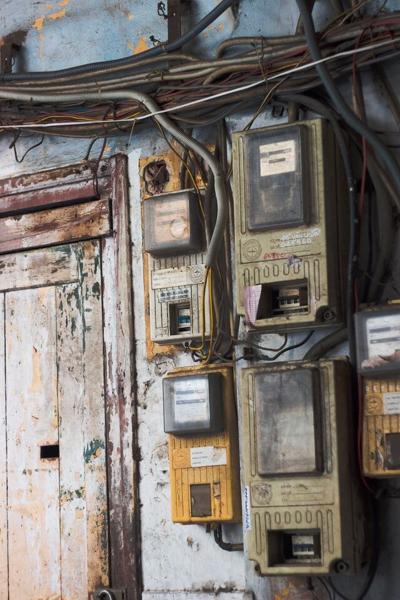
I run through appropriately designed and protected wires; heat, light, and power can all be delivered by electricity in your home or farm. Safe and energy efficiency are the hallmarks of well-designed wiring systems.
Identify faulty wiring:
Wires that are getting too hot and wasting energy should be avoided in any system. Detecting overloaded circuits does not necessitate a fire or a malfunctioning appliance, nor does it require the expertise of an electrician. Instead, look for signs of faulty wiring, such as:
- Circuit breakers and fuses frequently fail.
- Extension cords are routinely utilized.
- The lights darken, and the TV screen decreases a refrigerator, or another piece of equipment begins to run.
- Toasters and electric irons take a long time to heat up.
Smaller wire or low voltage issues can't be fixed by using more powerful circuit breakers or fuses, but adequate circuit protection will ensure the safe use of what you have. Consult an electrician or power provider if you don't have enough circuits to supply all of your electrical devices; you may need a more extensive service entrance. If rewiring is required, consult with electrical specialists like RG-Electric to create a wire layout.
In more complex systems, like those in industrial settings or appliance manufacturing, a wiring hook plays a crucial role in connecting components safely. Electrical wiring can be harmful if done incorrectly, so here are a few things to keep in mind. Even seasoned electricians follow these tips and practices when working on electrical wiring.
Check your power:
To avoid suffering an electric shock, make sure all wires and gadgets inside the box you're working in have electricity before you begin working on them. It's possible that even if you turn off the power, specific wiring may still pose a risk of electric shock according to TLE.
Unwinding the Cable:
Straightening the cables before installing them is the best method to make the process easier. You can lift a few coils by taking a cable from the middle and pulling it outward. The next step is to toss them across the floor like a coiled rope being thrown, and it's much easier to handle and store once it's untangled.
Rating of Amplifier Power:
Ensure that all electrical wiring and equipment have the correct amperage rating. Having the correct amp rating for all circuits is a prerequisite before any wirework. For example, a 30-amp circuit must be wired with an accurate gauge to avoid a fire hazard.
Electrical Wires Must Be Grounded:
Grounding provides a safe conduit for additional current to flow if an electrical problem occurs. For any of your electrical projects, ensure that you only install cables that are properly insulated and rated for your safety. Wiring diagrams supplied by the manufacturer should be followed to understand the grounding systems.
Boxes and clamping devices:
Electrical boxes or clamps must be used to protect all wiring connections. Accidental contact with these connections is avoided thanks to enclosures, which shield the connection and the individuals using it.
Heat-resistant, flame-resistant, industrial-grade, and other types of wire are all readily accessible on the market. Make sure you select the correct wire for your application.
With a suitable fuse, you'll be safe:
You can over-fuse and overheat the severely loaded wires with a penny behind a fuse. In addition, the hardening and flaking of the insulation cause conductors to become exposed in certain areas. As a result, dust, wood, paint, and other household materials could catch fire in the wires. Such dangers can be avoided by employing proper fusing. The Type-S plug, a tamper-resistant fuse, is a sensible and cost-effective safety device for 115-volt circuits. National Electrical Code recommends it as a replacement for fuse panels, and it is mandatory in new residences where fuse panels are utilized.
Recognize the components of a circuit:
New home building requires the electrical contractor to identify each circuit and utilize conductor sizes that match fuse sizes. When installing a new service panel, an electrician should keep a record of each circuit and affix it to the interior of the panel. Installing a new electrical system should not be accepted unless this documentation is provided. A record of your home's wiring circuits will save you time and money in the long run when you need to replace fuses, adjust fixtures, or perform other repairs. In addition, you need to see an electrician to ensure that all circuits are appropriately safeguarded against overloads.
In addition to facilitating safe electrical wire changes and replacements, the aforementioned pointers and checks also help build more secure homes.




(0) comments
We welcome your comments
Log In
Post a comment as Guest
Keep it Clean. Please avoid obscene, vulgar, lewd, racist or sexually-oriented language.
PLEASE TURN OFF YOUR CAPS LOCK.
Don't Threaten. Threats of harming another person will not be tolerated.
Be Truthful. Don't knowingly lie about anyone or anything.
Be Nice. No racism, sexism or any sort of -ism that is degrading to another person.
Be Proactive. Use the 'Report' link on each comment to let us know of abusive posts.
Share with Us. We'd love to hear eyewitness accounts, the history behind an article.